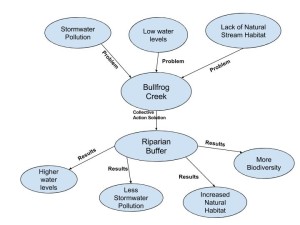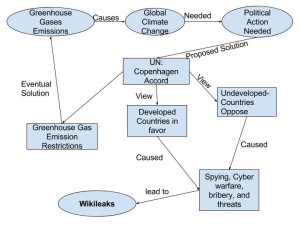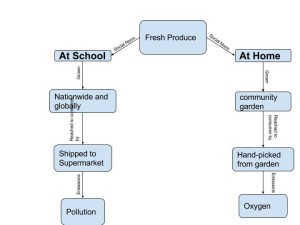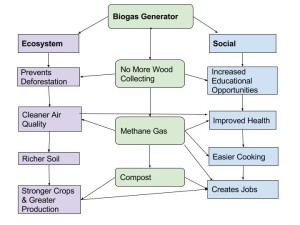1.Since human activities can either enhance or disturb biodiversity that means that biodiversity ties into human-environment coupled systems. Is your hometown currently trying to protect its biodiversity or threaten it? Explain why or why not. The H.I.P.P.O. Model can help guide this question. (200-300 words).
In my hometown of Harleysville, PA we have actually taken steps to help prevent water pollution and erosion from harming the creek’s ecosystem located in my backyard. This project developed was a called a Riparian Buffer Project in Lower Salford Township. This project was started out of concern for the lack of management of storm water runoff, which was causing water pollution and there was a lack of natural habits and water in the creek. The goal my community and the local water shed had for this riparian buffer was to decrease water pollution, increase the water flow, and create a more natural habit for the biodiversity living in the creek’s ecosystem. The project has been a long-term collect action problem in my community that began in the summer of 1999. It began by the township implementing grass-cutting laws in my neighborhood’s backyards, located along the creek. The next 10 summers after that people from my neighborhood and other members of the community would volunteer to plant trees, shrubs, and other native plants into the buffer zones. Since 1999, there has been less work to do every summer and now the buffer is really beginning to thrive with wildlife, plants, and the water flow has immensely increased. The project was so successful that my township began working on other parts of the creek a few years ago. Because of the success of this project, I can say that my local community has taken collective action to help better the human-environmental interaction in my hometown. In my opinion, this would be an IUCN Protected Area Category 6, Managed Resource Protected Area because it was created for the long-term sustainable use of the humans in my community.
2. Create a system diagram representing how your community is either taking steps to protect or threaten biodiversity.
3. What collective action could you and members of your community take to help to create more biodiversity in your hometown? (200-250 words)
In my hometown I think that members of my community can continue to use collective action in order to help create more biodiversity in my hometown by helping to pass and create more and new laws that help to create more biodiversity, such as riparian buffers, in my township. For example, my community has only create a riparian buffer and there a many more streams, creeks, and bodies of water in my local area that would greatly benefit from a riparian buffer. Since 1993, there has been a 23% increase of residential land use according to the township. Residential land development makes up about 43.8% of my community compared to the 15.2% of parks/recreation and the 29.7% that is agriculture/underdeveloped. By using collective action to pass laws that require more natural habitats around these developed areas, such as the laws in effect in my residential neighborhood, it would help to balance out the biodiversity in my local community. By creating natural habitats surrounding neighborhoods, not only would it increase the property value of residential homes, but it also will help to help to provide a better human-environmental coupled system in my area. My community can use collective action by writing letters to members in office, running for government positions, and signing petitions to help to gain support for more balance in the environment.




